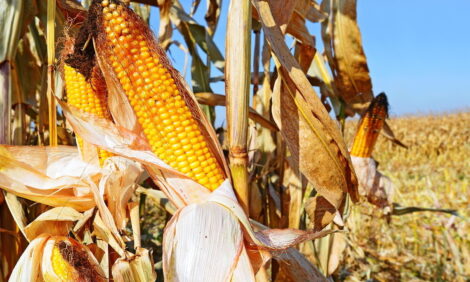



Calves and the cold
Frost bite, freezing to death and hypothermia are common causes of death of young animals from the cold. Dr W Dee Whittier, Extension Veterinarian at Virginia Tech looks at how, with appropriate management, these losses can be avoided.Frostbite is the damage to body tissues that occurs when these tissues freeze. The extremities are most at risk. Frozen ears and tails result in changes of cattle appearance but do not affect cattle performance significantly. Frozen feet generally result in a calf that must be put to sleep or will die. Occasionally teats of a recently calved cow freeze resulting in mastitis and frequently loss of milk production in at least one quarter of the udder.
Newborn calves are most at risk because they are wet and because they have a large surface area in relation to their total body mass. Calves are not fully capable of maintaining temperature the first several hours of life. Newborn calves have a circulatory system that is less able to respond to cold changes as compared to more mature animals.
Weather conditions have a great effect on the risk of frostbite and hypothermia, above and beyond just creating low temperatures. Wind is often the biggest factor. The effect of wind is often referred to as wind chill and tells how living things “feel the temperature”. Wind chill is often many degrees colder than the actual temperature. Humidity has a large effect on cold as well since humid air can take more warmth away from animals.
The surfaces on which cattle must rest also have a great effect on the risk of frostbite. If cattle must lie on snow ice or frozen ground they will lose much more body heat than if they can rest on dry bedding or grass. Snow or ice from freezing rain on calves dramatically increases heat loss.
Calves that freeze to death are unable to maintain a high enough body temperature to keep body processes working. Newborn calves have a special body tissue called “brown adipose tissue” that is designed to help them deal with cold temperatures. During cold temperatures this special fat is broken down and creates heat that helps the calf keep warm. However, very cold conditions can overcome this protective mechanism and calves die.
Intake of the first milk (colostrum) and physical activity help calves maintain and generate the heat they need for body process to work properly. Attentive mothers vigorously clean newborn calves and stimulate this activity and the nursing of colostrums. Inexperienced or less attentive dams may let a calf get cold enough so it is sluggish and hypothermia results.
Recommendations for preventing frostbite and hypothermia:
- Provide windbreaks for calving cows when wind chill temperatures are below 20º F.
- Provide bedding for calving cows when wind chill temperatures are below 10º F. Often the most convenient way to do this is to roll out a dry round bale of hay.
- House calving cows and calves less than one day of age when wind chills are below 10º F. and calves cannot be kept dry because of snow or rain. Remember, housing can also be a negative because organisms that cause scours and pneumonia build up in barns and stalls. Finding the right balance of protecting calves from the cold but not exposing them to sickness bugs requires special skill when weather conditions are severe during calving.
Treatment of frostbite:
- Detect frostbite early. Examine newborn calves carefully when conditions create a risk. If ear-tips are frozen there is significant risk that feet may be experiencing damage as well.
- Thaw tissues as quickly as possible. Much of the damage of frostbite occurs during the thawing process. Ice crystals form that damage all tissues. A fast thaw decreases ice-crystal time.
- Once tissues are thawed re-freezing must be prevented. This nearly always means housing with heat for several days. Because of damage to circulation from the initial freezing these tissues will re-freeze very easily.
- Tissues that will recover from freezing should stay warm. If tissues are cold to the touch the next day there has probably been enough damage so that blood supply is gone and the feet or other parts will become gangrenous.
Treatment of hypothermia:
- Careful observation of newborn calves during cold conditions is crucial. Healthy calves stand often, nurse large amounts of colostrums and are alert as evidenced by their holding the head up and getting up when encouraged. Extremities should feel warm.
- Cold calves should be warmed and fed warm colostrums. If they do not nurse then they should be given a bottle or tubed with colostrums or a commercial colostrums substitute.
- A number of warming techniques can be successful. A few hours in the floor board of the pickup truck with the heater on high saves many calves. Hair dryers both dry and warm cold calves. Heat lamps work best if calves are already dry. Electric blankets can be very effective. Some producers have built boxes with a forced air heater that are very effective.
- Severe cases of hypothermia require special attention. Sometimes warming the outside of the calf shunts blood from the critical organs and results in death. Warm water baths can warm a very cold calf quickly, but sometimes result in death. Warm IV solutions or warm enemas administered by veterinarians can sometimes overcome this problem.
Careful attention and appropriate treatments during cold weather calving can save calves’ lives and improve profitability in tough cattle economic times.
January 2010



